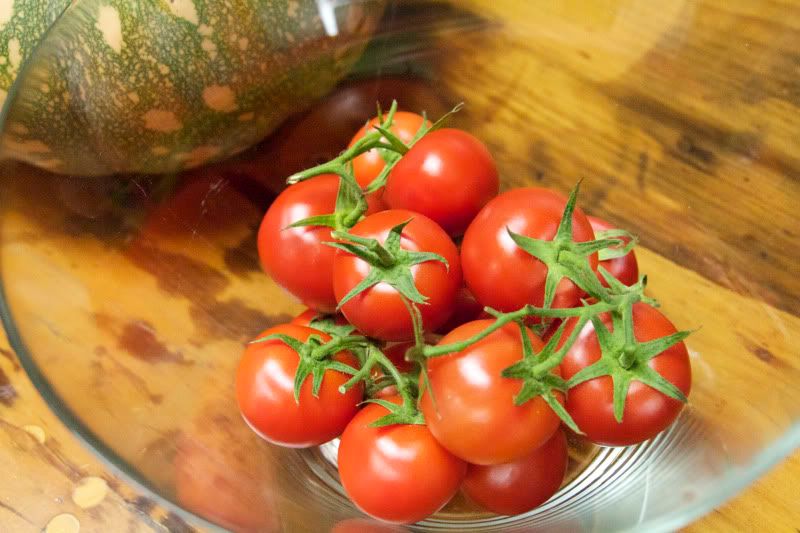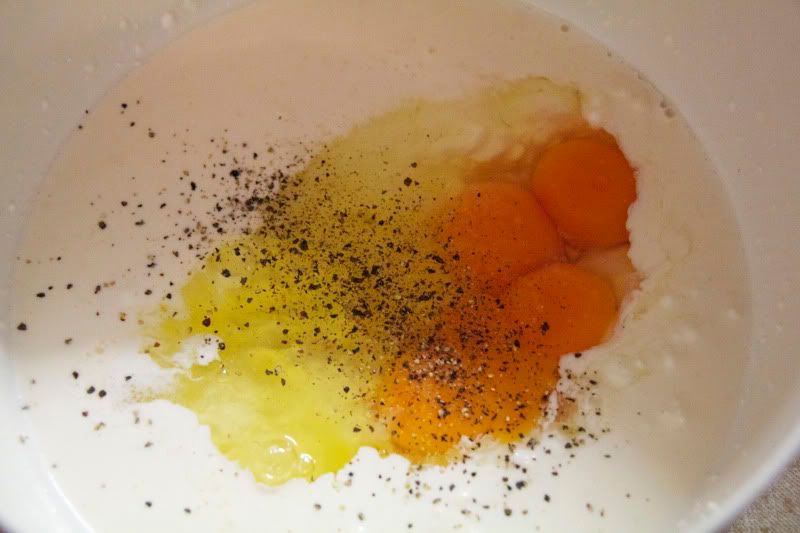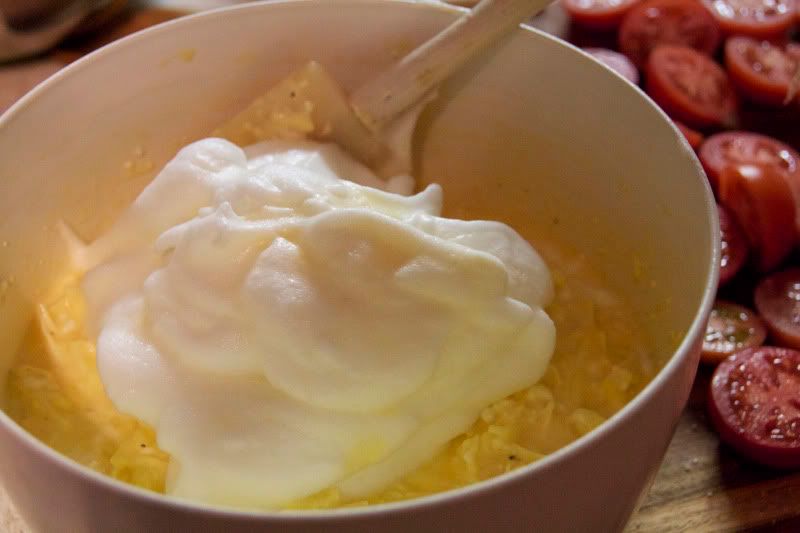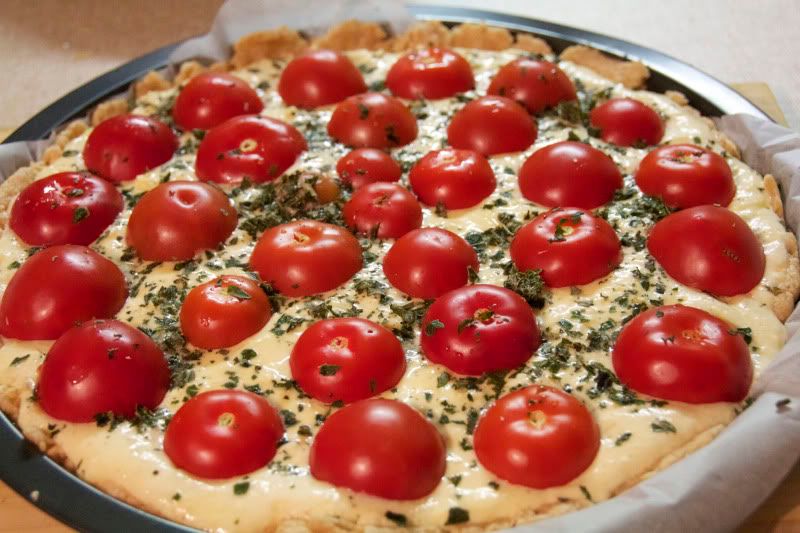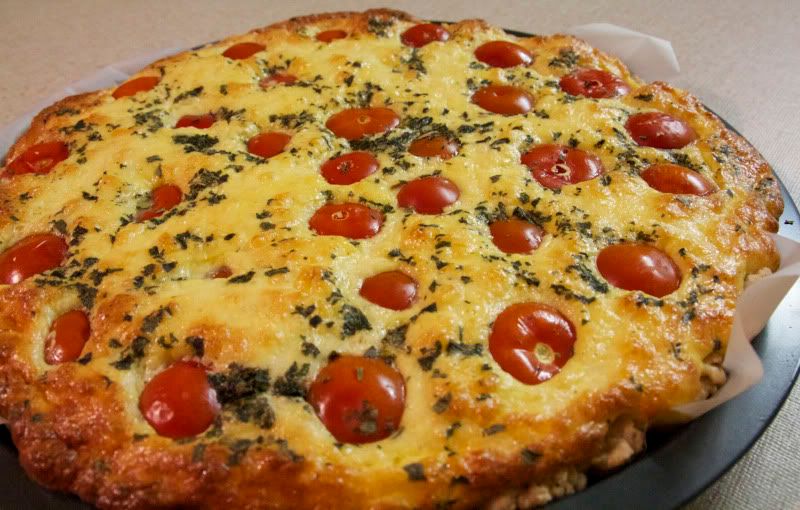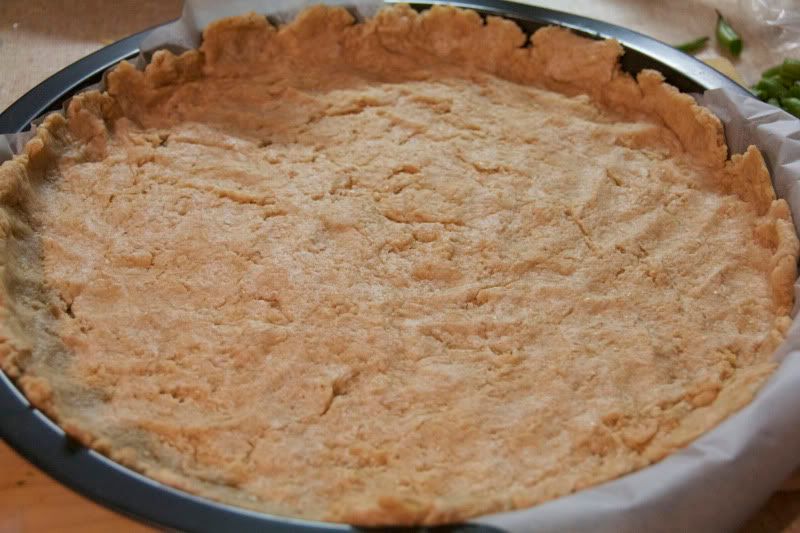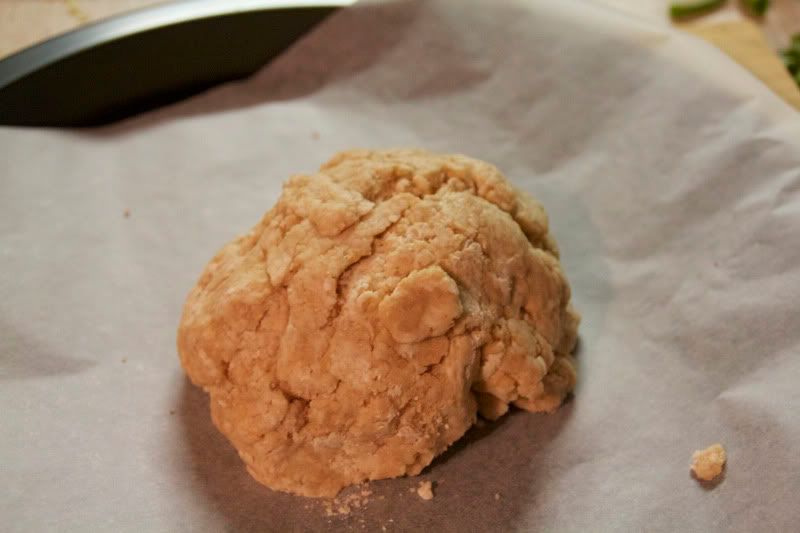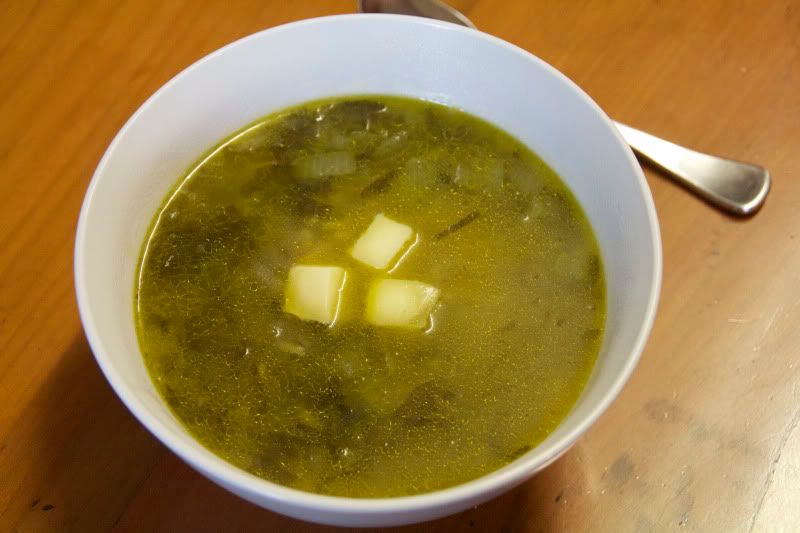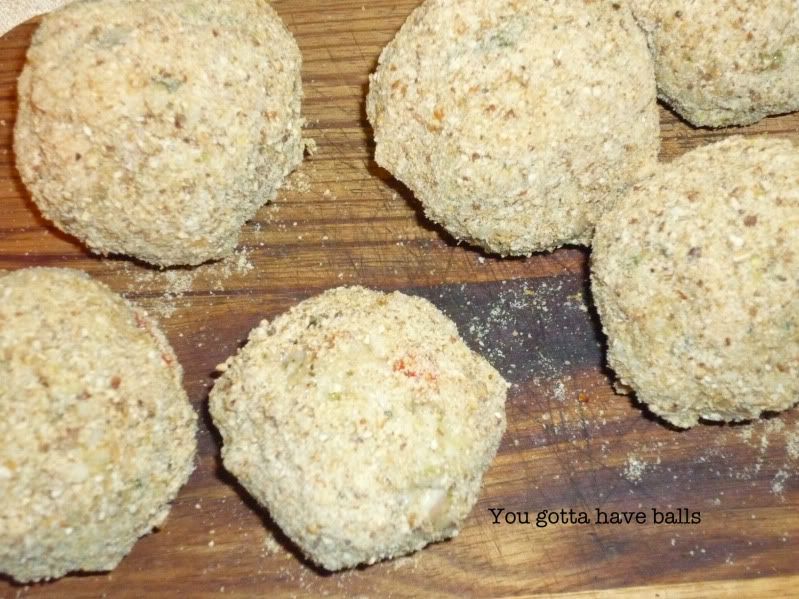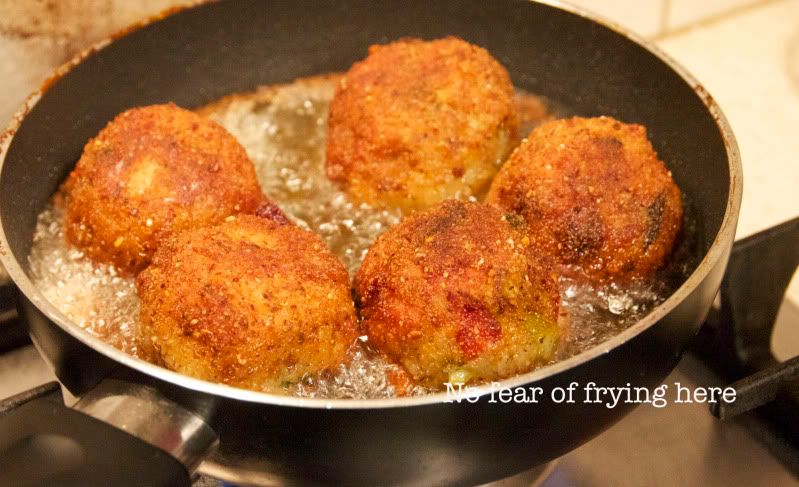I love going to church in winter. It's not so much that the sermons are more bracing with the bracing weather, but more the fact that there are a couple of trees in the yard that make me forget all about the "Thou shalt not steal" detail. I pinch the fruit, take it home, and pot it up into something yummy. And no, I take none of it back for fundraising.
Over twenty years ago in the church yard I saw a small brushy tree hung with clusters of cherry-sized fruit. I broke one open and it looked appley, so I decided they must be crabapples. I'd never seen a crabapple in my life, but I was full of my newfound confidence as a cook, as well as youthful devil-may-care-ness, so I filled a bag and took them home to see if I could turn them into jelly. They did turn into jelly, quite beautifully. It was my first attempt at jelly and it was glorious. I lined the jars of garnet red on my kitchen windowsill and admired the sun shining through them like quotidian leadlight. People ate the jelly, and didn't die, so I called it crabapple jelly, despite the nagging thought that it might not be. It wasn't until I saw a picture of a crabapple many years down the track that I was able to confirm that yes, I had indeed been making crabapple jelly all along.
My newfound confidence as a cook developed into something quite fierce when it comes to preserves. I am known as a good cook, which is nice, but it's not something I do to impress; I do it as an expression of love for appreciative eaters, and I don't boast. Unless we're talking preserves. My orange and apricot marmalade has reduced someone to tears because it was "just like mother used to make", and my Kasundi relish makes people promise me all kinds of things, so my ego at my preserving prowess is a formidable thing.
On a good day, I scoff at commercial "gourmet" preserves, and on a bad day, I laugh. I laugh at the companies who make them, which isn't bad, and I laugh at the people who buy them, which is. Some years ago, dear friends were talking about Maggie Beer quince paste. "Oooh it's just beautiful," one of them said. "We love it. Sometimes we're so naughty, we eat the whole thing between us in one sitting!" I could understand it. I love quince paste, chunky wedges of it cut from a huge wheel, and I could understand eating the temptation to eat the whole thing. What I was unprepared for was the fact that "the whole thing" on the platter was about as big as one of those luncheon tins of tuna, and not only had they paid a preposterous amount of money for it, but IT DIDN'T CUT! It was a spreadable paste, fine in flavour but lacking body. I was aghast that the lusty-laughed Maggie Beer, this great instinctive cook I admire, had made a lazy person's quince paste. I didn't laugh this time, because these are men I love dearly, but I did scoff. And next time I made my yearly batch of quince paste (which I set in cake tins so you can cut yourself a sizeable wedge) I sent over a wheel and dared the boys to eat "the whole thing" between them in one sitting.
You know what? No matter how much you're forking out for your jam or your brekkie marmalade, 99% of the time you'll be buying a lazy person's preserve. Nine times out of ten, they'll add pectin because it means you can be just that bit more of an idiot when making it, but more importantly, because it gives them a higher yield and profit. And you get a low-quality preserve, no matter how much you paid or how pretty the jar or how prestigious the label. I will go all Napoleon Dynamite and unblinkingly say that when it comes to making preserves I'm "probably the best one that I know of", including the commercial "gourmet" preservers, but the ones who can give me a run for my money are the old-school dames. It is THESE people who should be getting your jam money. One of my dad's patients, a woman in her late seventies, makes a three-fruit marmalade that is to die for; not just beautiful to eat, but beautiful to look at. I have never seen marmalade like it. The peel is cut with utmost care, perfectly even, fine but chunky enough to give it body, and the ratio of peel to jelly is just right. Women like these do not make lazy person's preserves, and you can buy jars of them at CWA stalls and church bazaars and you can pay double or triple for them because they are worth every single cent.
I love to make preserves because it's just a completely unnecessary thing to do. It is the very definition of luxury because you are carving out time to make something that anyone could buy, except infinitely better, and the process is something that cannot be rushed. The cutting, measuring, stirring, skimming, and potting is my favourite form of meditation, and the house fills with the most beautiful sugary scents.
I also love to make preserves because I love to eat them. Out of them all, marmalade is my favourite. I love and crave bitter things (I once admitted this to my cousin's husband Leo, and he said, "I love bitter things too. That's why I married your cousin."), and I also have this outta control sweet tooth. When something is both bitter AND sweet... HEAVEN! And bitter and sweet is exactly what good marmalade is, of course. One of my happiest days in the kitchen was when I found a recipe for something called "Budget Marmalade", which was made from the orange skins left over from juicing. Well - stuff the budget, this was one of my best marmalades ever, with the most fantastic balance of bitter and sweet.
I don't remember my maternal grandfather, but I appear to be the only one in the family who has inherited his very particular fetish of eating homemade marmalade on its own, as a sweet, without any kind of bready vehicle. To clarify: we're not talking ordinary marmalade here, which I'll eat on toast like any normal human being, but my abuela's whole cumquat marmalade, or her "mermelada de gajos", which translated means "marmalade of wedges". We're talking whole wedges of citrus set into the jelly, that she would give him in a bowl to eat with a soup spoon. This might set your teeth on edge, but it makes perfect sense to me, and it might make perfect sense to people from cultures with "spoon sweets". And while I have yet to sit down to a bowlful of marmalade, after my lunch I will stick a fork into a jar of my own mermelada de gajos and lift out a translucent, amber wedge to eat for dessert.
So back to church, where currently the cumquat tree is generously bearing fruit. Yesterday I roped in my two sons and my older son's friend Daniel, and between the three of them they took about two hours to pick me a quarter of a Coles bag full. Never mind. It's enough for a batch of straightforward cumquat marmalade (for our brekkie toast, like normal people), with enough left over for a few jars of my abuela's whole cumquat marmalade (for me, fork in hand, thoroughly abnormal), which has perfumed my house today so beautifully. And because I'm not just the best preserves cook that I know, but the most generous one, I'll even tell you how to make your own, should you also happen to want to steal your own cumquats, from church or elsewhere.
ABUELA SOFIA'S WHOLE CUMQUAT MARMALADE
Ingredients:
Cumquats
Sugar
Juice of half a lemon
Method:
1. Place whole cumquats in a pan with enough water to cover. Bring to the boil, then lower the heat and simmer about ten minutes, or until tender. Allow to cool.
2. Measure cumquats and their cooking liquid and remember the amount of cups. Carefully squeeze each cumquat so the pips pop out. Place all the pips in a square of muslin (cheesecloth) or clean Chux, gather it up into a parcel, and tie it securely closed. If you have a non-corrosive tea infuser, you can also use that. (This is called a jelly bag. It helps the marmalade to set. You can suck on it after making your marmalade.)
3. Place cumquats, their cooking liquid, and the jelly bag back into the pan. Bring to the boil. Add lemon juice, and one cup of sugar per cup of fruit and cooking liquid. Stir to dissolve sugar, then boil rapidly about 20-30 min., or until setting point is reached (see note below). Allow marmalade to cool to warm, stirring occasionally. (Cooling marmalade before potting ensures that the cumquats are evenly distributed through the marmalade rather than rising to the top.) Turn marmalade into hot sterilized jars (see my "How to Do Stuff" page, right), and seal.
EASY CUMQUAT MARMALADE
Nine times out of ten, when I make this marmalade I make a slattern's marmalade, because I really can't be fizzed getting the pips out. It doesn't make a difference to me, because it just so happens that cumquat pips are perfectly edible in marmalade. If you object to pips, flick them out as you slice, and pop them into a square of fabric or tea infuser as above.
Ingredients:
Cumquats
Sugar
Juice of 1 lemon
Method:
1. Cut cumquats into slices or wedges, and place in a large bowl. Barely cover with water, and leave overnight.
2. Measure cumquats and their cooking liquid and remember the amount of cups. Put into a pot and bring to the boil. Simmer until cumquats are tender and liquid is reduced by about half.
3. Add lemon juice, and one cup of sugar per cup of fruit and cooking liquid. Stir to dissolve sugar, then boil rapidly about 20-30 min., or until setting point is reached (see note below). Allow marmalade to cool for about half an hour, stirring occasionally. (Cooling marmalade before potting ensures that the fruit is evenly distributed through the marmalade rather than rising to the top.) Turn marmalade into hot sterilized jars (see my "How to Do Stuff" page, right), and seal.

NOTE: You must NEVER judge jam or marmalade to be ready when it looks the colour of the commercial stuff. The cooking of commercial jam and marmalade is arrested much earlier by the addition of pectin, and your homemade jams and marmalades will be much deeper in colour. To test for set, remove pan from the heat. It should fall from the spoon in large flakes rather than running off it. Place a bit of jam or marmalade on a cold saucer, and put it in the fridge or freezer for a few minutes. Push it with a finger. If it wrinkles, it's ready.
This blog was originally published on Myspace on 23/5/06
